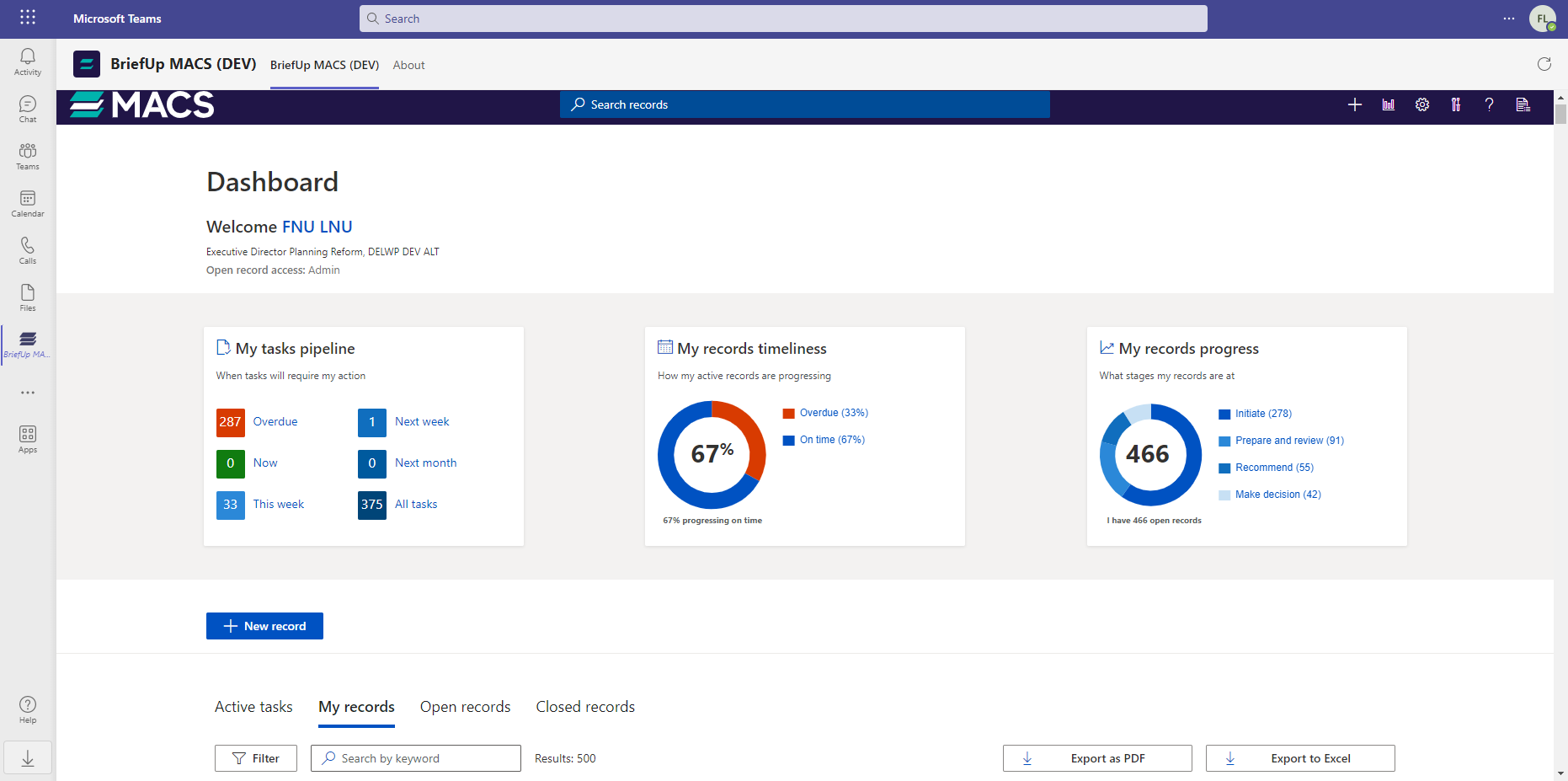
The top 4 ways Brief Connect can transform briefing and correspondence for government departments
Published May 2023
Brief Connect, our briefing management & correspondence platform is a digital solution designed to digitise the briefing and correspondence process. We talk through the top 4 ways it can transform your department.
If there are three things we can be absolutely sure of, they would have to be death, taxes and constant change.
When it comes to transformation, COVID spared no one – not even government. In particular for government, as employees began to predominantly operate remotely at the beginning of the pandemic, departments needed to rapidly implement solutions to continue business-as-usual for key work products, like the ever-present departmental brief.
The resulting solutions delivered much-needed continuity, enabling critical documents and records to continue to be developed and approved, even if it couldn’t be done in person. However, just because something can be delivered remotely, doesn’t necessarily mean it’s delivered properly. In fact, in this ‘hybrid’ world we’re living in now, with the barrage of emails, notifications, remote meetings, and digital documents, it can be even harder than it was before for government departments and organisations to ensure compliance, conformance, and traceability.
This is exactly why we built our Briefing Management & Correspondence Platform, Brief Connect. Born out of a need to radically transform how key records are created, developed, and approved within government departments, Brief Connect was created to be a powerful digital platform designed to streamline the delivery of governmental work products, like department briefs, ministerial correspondence, and parliamentary records.
Brief Connect takes large, complex and multi-faceted processes used in departments to create and approve these work products, and distils them into a streamlined, easy-to-use application. Built on top of a Microsoft 365-based technology architecture, government departments that implement BMCP report greater compliance, faster resolution, and clearer visibility over their organisation workload.
Our primary goal is transformation, so let’s explore four ways in which Brief Connect can transform your department, making your work more streamlined and effective.
1. Standardise key processes to create and approve records
The production of key work products such as a ministerial briefing is usually the result of one or many processes being executed. These might range from a circular and collaborative drafting process, through to multi-level approval workflows. These processes vary in terms of governance and compliance – quite often, we find that they aren’t defined and documented in fine detail, leading to departures from the agreed process (like skipping a key approval step).
When a record is defined in Brief Connect, the workflow to deliver that record is also clearly defined. Manual, off-system steps are removed, and the entire process is displayed in a simple to understand timeline format. The system handles all the communication and task management, automating much of the process. All users need to do is complete their work, and then action the next step in the workflow.
Standardising your processes for key records and documentation means it’s easy to audit and identify production bottlenecks, modify elements of each process and deliver greater efficiency.
2. Keep staff on-task with Dashboards
One of the major challenges government departments face is keeping employees focused and informed about their tasks and responsibilities. Tasks are often assigned discretely across various channels – like email, Teams or phone call – and the list of work someone is tasked with doing is not centralised or prioritised.
Brief Connect addresses this issue by providing interactive and personalised dashboards for each user. These dashboards offer a clear overview of ongoing tasks, deadlines, and the status of briefs and correspondence.
From the dashboard, users can quickly identify pending tasks, track the progress of briefs, and ensure they are working on the highest priority items.

3. Reduce unnecessary context switching
In today’s fast-paced work environment, we are interrupted (and arguably bombarded) by various tasks and notifications, resulting in a high degree of context switching. According to a study by the American Psychological Association, context switching can reduce productivity by as much as 40%. When we context switch, it takes time for our brains to refocus, resulting in wasted time and increased stress levels.
Brief Connect reduces context switching by integrating with the tools government employees already use daily, such as Microsoft Teams. Within Teams, users can access the platform directly within the Teams interface, meaning that staff can work on briefs, correspondence, and other tasks without having to switch between multiple applications.
Additionally, notifications come through the Teams activity feed, keeping users informed about record changes, updates, and approvals without the need to navigate away from their primary workspace.

4. Deliver transparency and accountability over the creation of records
Without a digital platform to manage and streamline the creation of government records, it can be extremely difficult to trace the history for a given document. Users find themselves poring over email threads, Teams conversations and handwritten meeting minutes to determine what was written in what version, who approved what and when, and what input led the creation of a final product.
BCMP provides a transformational level of transparency and accountability throughout the life cycle of work product creation approval. Through the Activity Log, users can see who took what action and when, and view document iterations over the course of development. This enables teams to easily monitor the development of critical documents and track changes.
Because Brief Connect is built on a Microsoft 365 foundation, we can leverage cutting edge auditing capability available to Microsoft Enterprise customers, with audit logs showing detailed accounts of the development and access to specific documents and records.
The bottom line
By adopting Brief Connect, your department can achieve greater efficiency, compliance, and visibility, ultimately empowering your team to focus on what matters most – serving elected politicians, the public, and making a difference.
Ready for more? Get in touch with us today to explore how Brief Connect can transform your department.
About the author
Jeremy Stokes is a Senior Consultant at Engage Squared, where he has spent the last two years working closely with the public sector to automate, streamline and standardise delivery of operations and government services. He’s passionate about simplifying business process and delivering elegant solutions that make government departments smarter, faster, and more effective.
Jeremy is based in Bendigo, Victoria where he lives with his wife and two young daughters. In his free time, you can find him trying (and failing) to bake bread, mucking around with the latest AI tools, or checking out the newest playground with his kids.
This blog is part of our ‘modernise and secure teamwork with M365’ campaign. Follow us on LinkedIn as we share our insights across a series of blogs, client success stories, and events, as we explore how M365 can help solve today’s unique set of challenges.


